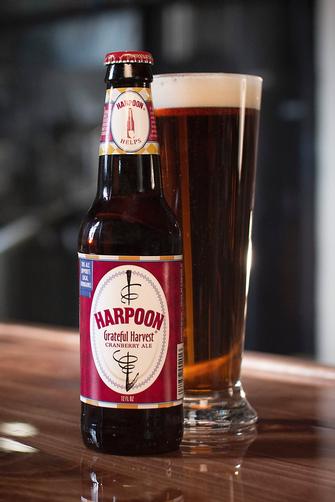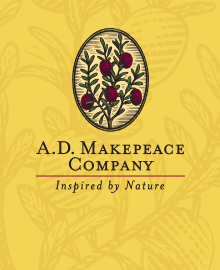By Robin Coxe
Had I gotten my act together earlier, I would have written this post prior to Thanksgiving, but better late than never…

Since its inception in 2010, Grateful Harvest, a cranberry amber ale, has overtaken UFO Hefeweizen as my favorite beer from Boston’s own Harpoon Brewery. The fact that my family plays a small part in the Grateful Harvest story reinforces this opinion. Local cranberry grower A.D. Makepeace Company of Wareham, MA donates the cranberries for each batch.

As it happens, I was adopted by WASPs at the tender age of 4 months, which explains why my name is Robin Coxe and not Young-Mee Park. My family has been in Massachusetts since the dawn of time (well, 1630 or so). My paternal grandmother’s maiden name is Makepeace, a name subsequently bestowed on my father and brother as a middle name. My great uncle Russell was the CEO of A.D. Makepeace Company, the family cranberry business, from 1946-1983. A.D. Makepeace is the largest landowner in Eastern Massachusetts and is still the world’s largest cranberry grower in spite of fierce competition in recent years from cranberry concerns in Canada and Wisconsin. My brother currently serves on the Board of Directors. In addition to funny ads featuring cranberry farmers, the Ocean Spray cranberry cooperative has a conference room named in honor of Abel Makepeace, Russell’s grandfather, in its corporate headquarters in Lakeville, MA. I drank countless gallons of cranberry juice growing up and actively disliked orange juice until I was well into my 20s.

In the current age of wacky diet fads, cranberries get a bad rap for not being edible by humans without added sugar. Nevertheless, they happen to be rich in antioxidants and are thought to stave off heart disease. The cranberry was the key component of pemmican, referred to in a recent National Geographic piece as “the original energy bar, 400 years before anyone knew what a superfood was.” A staple of the Native Americans that populated New England prior to the arrival of the Pilgrims in the early 17th century, the cranberry has retained a prominent place on the Thanksgiving table, primarily in the form of a gelatinous sauce. To quote Martha Stewart: “Thanksgiving dinner would not be complete without the customary cranberry.” Harpoon Brewery agrees: “We brew Grateful Harvest because we love Thanksgiving here in New England and thought a cranberry ale would be a perfect beer for the occasion.”
This seasonal beer is available from mid-October through December. For every six-pack of Grateful Harvest sold, Harpoon donates $1 to the local food bank in the area in which the beer was purchased through the Harpoon Helps program, which has a most excellent motto: To Brew and To Serve. Unlike its overwrought watermelon and pumpkin-flavored cousins that rear their ugly heads earlier in the year, Grateful Harvest is a smooth, malty concoction with hints of fruitiness balanced nicely by the signature cranberry tartness and bitter notes from the hops. At 5.9% ABV and 30 IBUs, Grateful Harvest has garnered accolades for its drinkability and refreshing character. Many people to whom I’ve served Grateful Harvest comment that they were struck by the subtlety of the flavor profile; if they hadn’t seen the label or been told the backstory, they wouldn’t necessarily have guessed that it contained the essence of puréed cranberries.
So, if you live in New England, hurry down to your local packie and pick up a six-pack of Harpoon Grateful Harvest before it disappears from the shelves until next Thanksgiving.
